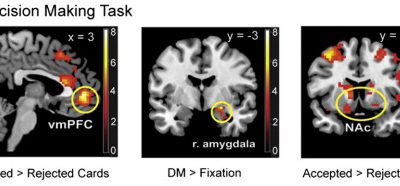 Richard Gonzalez
Richard Gonzalez
Center Director, Research Center for Group Dynamics, Institute for Social Research
Co-Director, BioSocial Methods Collaborative
Amos N Tversky Collegiate Professor, Psychology and Statistics, LSA
Professor of Integrative Systems and Design, College of Engineering
| E-mail: | Email Richard Gonzalez |
| Address: | Research Center for Group Dynamics Institute for Social Research University of Michigan 426 Thompson Street Ann Arbor, Michigan 48106 |
| Phone: | 734-647-6785 |
Decision Making
Contextual cues influence judgment biases but only if they activate relevant motives
We show how judgment biases can vary as a function of contextual cues that are relevant to an individual.
Why sometimes we choose differently than how we advise
There several reasons why what’s good for the goose is not always seen as being good for the gander. The attributes of a decision may be weighted differently when choosing for oneself compared to when giving advise. We present a simple model and some data suggesting that advice tends to focus on one prominent attribute, but choice for oneself tries to deal with tradeoffs.
How do emotions help us learn and decide?
We developed a new paradigm where participants learn risky contingencies and then make decisions based on what they learned, all while in an MRI machine so BOLD can be measured along with the behavioral data. We find that affective processes play an important role in shaping subjective value in decision making as well as learning.
Supportive relationships can attenuate the appeal of choice
We show how being reminded of particular types of social relationships reduces the appeal of large choice sets.
Does interacting with others make you more confident in your judgments?
We examine how individuals become more overconfident in their knowledge when interacting with other decision makers. In three studies we test several possible explanations. The most consistent explanation for our findings is one of “rationale construction” where confidence increases by virtue of having to explain or justify one’s choices to others.
How do we distort probability when making risky decisions?
We present preference conditions for the curvature of the probability weighting function in the context of cumulative prospect theory. Those conditions are tested with a new “ladder” procedure.
How we distort probability when choosing between risky options
This paper builds on our previous work suggesting a functional form for how people distort probability in the context of prospect theory. Our earlier work tested simple conditions of curvature (i.e., concavity and convexity) using specially designed choice ladders. The approach in this paper is different. We use a choice-based cash equivalence procedure and then compute a global model fit. We develop a nonparametric algorithm to estimate the general shape of the distortion’s functional form. The shape is well modelled using a linear in log odds functional form.
Negotiation in Environmental Disputes
Extending standard negotiation theory to solving disputes involving the environment.
A semantic approach to the theory of evidence
We develop a semantic model for evidence that deals with interactions between propositional structure, evidence, and judgments of belief.
A historical review of the judgment heuristics literature
We provide a historical overview of the Heuristics and Biases research program that describes its intellectual antecedents and the special role of the rational actor model in shaping its methods, and we review the program’s evolution over the course of three waves of research and theory development.



